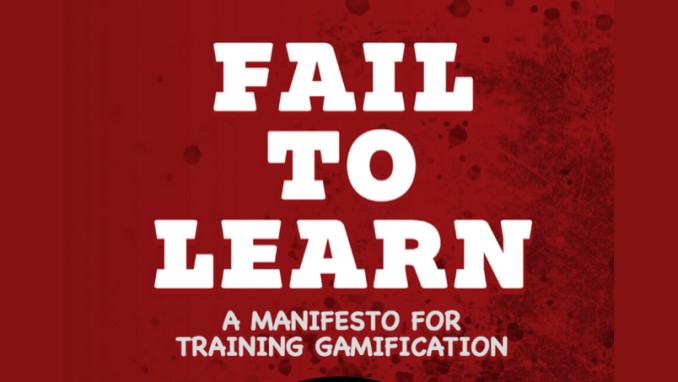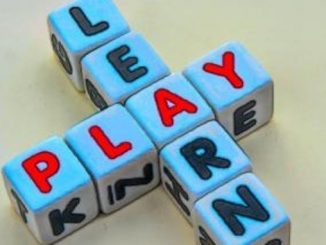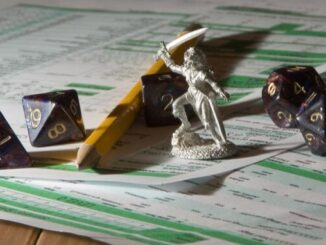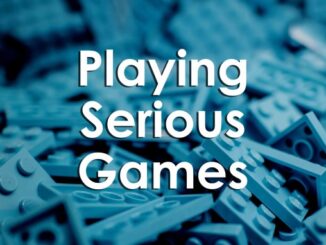
Fail to Learn is available on Amazon
Fail to Learn by Scott Provence is a book based on a syllogism. In fact, each of its three parts is based on one part of the syllogism: People learn the most from failure, People fail the most playing games and Therefore, games are the best way for people to learn.
Games-based learning (GBL) professionals and other interested parties make many claims for the efficacy of games in learning. For example, that they engender greater engagement, that they allow the creation of learning situations which would take much longer, or be more dangerous, in a non-game setting, or that play and learning are, in fact, the same thing. And there are many books in which you will find all these and more addressed in some detail.
An In-depth Exploration of Failure
One of this book’s greatest strengths, is that it focuses on just one aspect of play in learning, and thus, not only emphasises the importance of that aspect, but gives space and time to be really thorough in exploring it. While I, like many other GBL professionals have often cited ‘safe failure’ as a reason to use games in learning situations, I have never read something, which, in its depth, made me think about all of the implications of that in such detail.
This book is subtitled ‘A Manifesto for Training Gamification’, and the author goes on to explain his liking for the audacity and actionable nature of manifestos. There is much here that is actionable – and aspect of such books that I particularly like. Indeed, the entire third part of the book is dedicated to finding ways (many of them very quick and easy) to put into practice what you have learned about failure during the first two parts
An Audacious Manifesto
It is also true that many will find this book audacious, and for some educators, maybe too much so. As Scott notes throughout the book, we have been socialised to have a deep aversion to failure, and this is common in the field of learning and education as elsewhere. In this book, you will find compelling arguments as to why this is a problem we should, and indeed must, tackle, if we are to create learning as it should be, not only effective, but joyful.
While this subtitle implies a focus on workplace learning, the ideas within are universally applicable, from early education to adult learning. Creators of learning games often find that they have to justify why they are proposing learning techniques which many believe should be ‘just for children’. I hope that sceptics who read this book will find plenty of food for thought in the examples of research from learners of all ages.

People Learn the Most from Failure
In the first part of the book, People Learn the Most from Failure, the reader is invited to explore the current basis of many learning and education systems, based as they are on the ideas of Behaviourists such as B.F. Skinner. Although most teachers would dislike the idea that they treat the children in their care like pigeons in cages, or cats in electrified boxes, it is undeniable that we still ‘punish’ learners, of all ages, for failure, by making that failure ‘costly’ (if you fail the exam you must retake the whole course) and stigmatising the act of failure, as well as relying heavily on extrinsic motivators to incentivise people in all sorts of ways.
And yet, as Scott shows through references to many studies and through compelling anecdotes (the entire book is peppered with these, to great effect), those who are allowed to fail, benefit from that process by learning better – and the more they fail, the greater that beneficial effect becomes.
We often hear quotes from inventors and entrepreneurs about the wisdom of ‘failing fast and cheap’. This part of the book asks us to reflect on what failing fast and cheap might look in education.
People Fail the Most Playing Games
With the benefits of failure now well-established, we move to the second part of the book, People Fail the Most Playing Games. The first chapter of this section appears as an article in Ludogogy, so if you want to get a taste of this book you can do so there.
The section explains in detail what games are, and their relationship to failure, how they make it a low-cost activity, and the benefits of creating similar low-stakes failure opportunities in our learning experiences. Without ‘obstacles’, which bring with them the potential to stumble and fail, games are not games at all. When we apply this idea to learning, we discover, counterintuitively, that making learning more difficult, and thus more likely to cause failure, we facilitate learning rather than hindering it.
Therefore Games are the Best Way for People to Learn
The third part of the book, Therefore Games are the Best Way for People to Learn, draws together all that has come before, giving us actionable ways to implement constructive failure in our learning designs. But these are spread throughout the book too. Many chapters end with a pop quiz, which not only consolidate material covered in the preceding text, but, progressively, incorporate actionable failure features, providing practical examples of implementation and allowing us the experience of constructive failure in the learning of the book.
An example of the kind of simply actionable ‘hack’ that we could apply to learning designs, to utilise failure as a benefit, is to add ‘confidence’ scores to learner assessments. Learners answer a question and then simply give a score of 1 – 10 of how confident they are in their answer. This adds little design overhead, and, as it doesn’t need marking, adds nothing to the educator’s work after the fact. However, it is shown to increase correct recall of the material being tested, especially, again counterintuitively, if we are confident in an answer which is actually wrong.
Templates for You to Use
The final section of the book also provides a complete model incorporating the ideas in the book and templates and other resources to support your use of the model for your own learning designs are offered at Scott Provence’s site.
This review just scratches the surface of what you will learn by reading this book, and the inspiration you will take away for your own learning designs. Scott Provence has done a masterful job of exploring failure in its many forms and presenting us with simple applications, which in turn will inspire further exploration.
The aversion to both failure, and, it seems, fun, which characterises many of the education and learning experiences which many of us have borne in the past, and continue to have to bear, do not just make learning unpleasant, but they make it less likely to stick or benefit us longer term.
If you want to do your bit to make learning better, then embrace the fun and benefit of failure, and you could definitely do worse than to use this book as your guide in your exploration of Failing (in order) to Learn.
Honourable mention also has to go to Will Burrows, who did the illustrations for the book, which complement the text wonderfully.
Check out Scott Provence’s TEDx talk on Failing to Learn.
Fail to Learn is available on Amazon
(Ludogogy Affiliate policy: Ludogogy did receive a review copy of this product, but only publishes reviews of products that we would be willing to recommend and buy ourselves. If we don’t like something, we don’t write a review, ‘cos ain’t nobody got time for reading about something that’s no good)
- James Bore – The Ransomeware Game - 13th February 2024
- Ipsodeckso – Risky Business - 23rd January 2024
- Review – Luma World Games - 15th December 2023






Be the first to comment